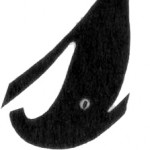Novice Question: when to finish seam allowances
-
14 years ago LINK
KnittsSewsQuilts @KnittsSewsQuilts
I’m newer to garmet sewing, which is why I love sewing with Oliver + S patterns. I follow the instructions VERY exactly until I get some confidence that I know what I’m doing. Anyway, I’ve just finished a Sailboat top and wondered why we finish seam allowances after we sew a seam? I usually just zigzag stitch mine, and it seems like it’d be easier to do that before I sew the seam. To be specific, on the Sailboat top when you’re sewing the side seams and sleeves and then finish the seam allowance – but I remember thinking the same thing when I made the Bedtime PJs.
I’m all for short cuts and may finish the seam allowances first next time, but I thought I’d at least find out why the instructions tell me to do it afterwards. Thanks!
14 years ago LINK Nicole
@motherof5
Nicole
@motherof5
I tend to finish seams first,but I have been told it may distort very fine fabric,so possibly that is why the instructions are written so.
If you use a gentle hand ,it should be fine.
14 years ago LINK Violaisabelle
@Violaisabelle
Violaisabelle
@Violaisabelle
I think it all depends on the fabric and what you are sewing. If it’s a fine fabric, as Nicole mentions, I might resist finishing the seam first for fear of stretching the fabric. However, if it’s a stable cotton or something like that, then often time I will finish edges first, then assemble the garment. If it’s a fabric that frays easily, I will probably finish the edges first, then assemble.
Enjoy your garment sewing, it is so rewarding. 🙂
Carol
14 years ago LINK Sarvi
@Sarvi
Sarvi
@Sarvi
I have started making myself sewing kits, based off something I saw Nicole do, where she cuts out the pieces to have them ready for when she has time to sew. I went ahead and also finished the edges as needed (in wool, cotton, and linen/cotton so far) and it was great. I put together some Sailboat pants in about an hour, except for buttons/buttonholes, and I’m definitely a slow worker. Can’t say I noticed any stretching, and it definitely helped them fray less.
14 years ago LINKE1izabeth @E1izabeth
One benefit to finishing the seams after you’ve assembled the garment is that you can finish both sides of the seam allowance together, so they are bound together. Also, if you are zig-zagging your seam allowance you can sew your line of stitches in the middle of the seam allowance (instead of the edge) and then trim away the outer edge of the seam allowance right up to your zigzag stitches for a smaller seam allowance inside the garment.
I usually leave the edges raw until after I’ve assembled the garment. I try to use as many enclosed finishes as possible (french seams and bias bound seams) and I find those are easier if I just leave the edge raw until the garment is assembled.
14 years ago LINKKnittsSewsQuilts @KnittsSewsQuilts
Thanks so much for all your thoughts! I especially like Sarvi/Nicole’s idea of getting pieces ready ahead of time. I’m hoping to cut out another pattern or two this weekend.
Lindsay
14 years ago LINK KarenK
@KarenK
KarenK
@KarenK
I’ve found that with O+S patterns it helps me to read the instructions all the way through first (if I haven’t sewn it before) and make notes of where I might want to serge a piece first before I assemble it. OR as I go through a new pattern I make notations so that I’ll know next time where it’s easier to finish the edge first.
14 years ago LINKAnonymous @
I like to use a zig zag stitch to finish seam allowances as well. When I do, I typically see that the edge rolls a little and/or distorts. If I did that before sewing the garment, it may affect the final seam allowance. If you use a method that does not distort the edge, it can be very handy to finish ahead of time.
You must be logged in to reply to this topic.
copyright
Unless otherwise credited, all work on this blog is © Liesl + Co., Inc, 2008-2026. You are welcome to link to this blog, but please ask permission before using any text or images.